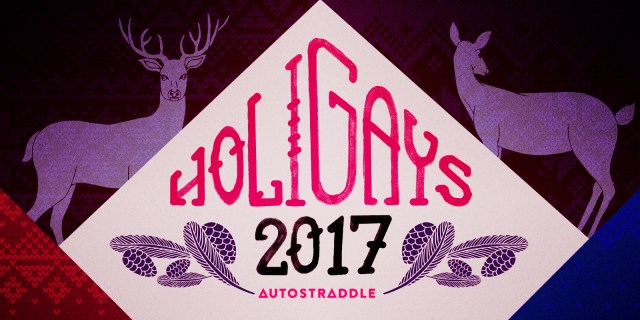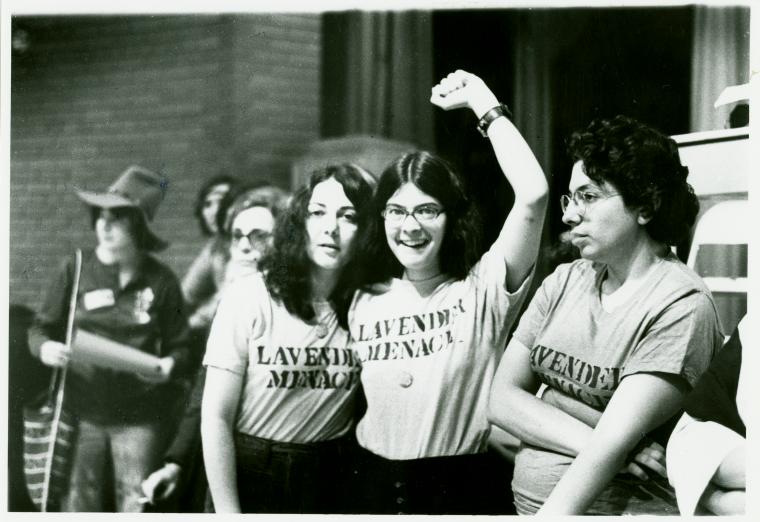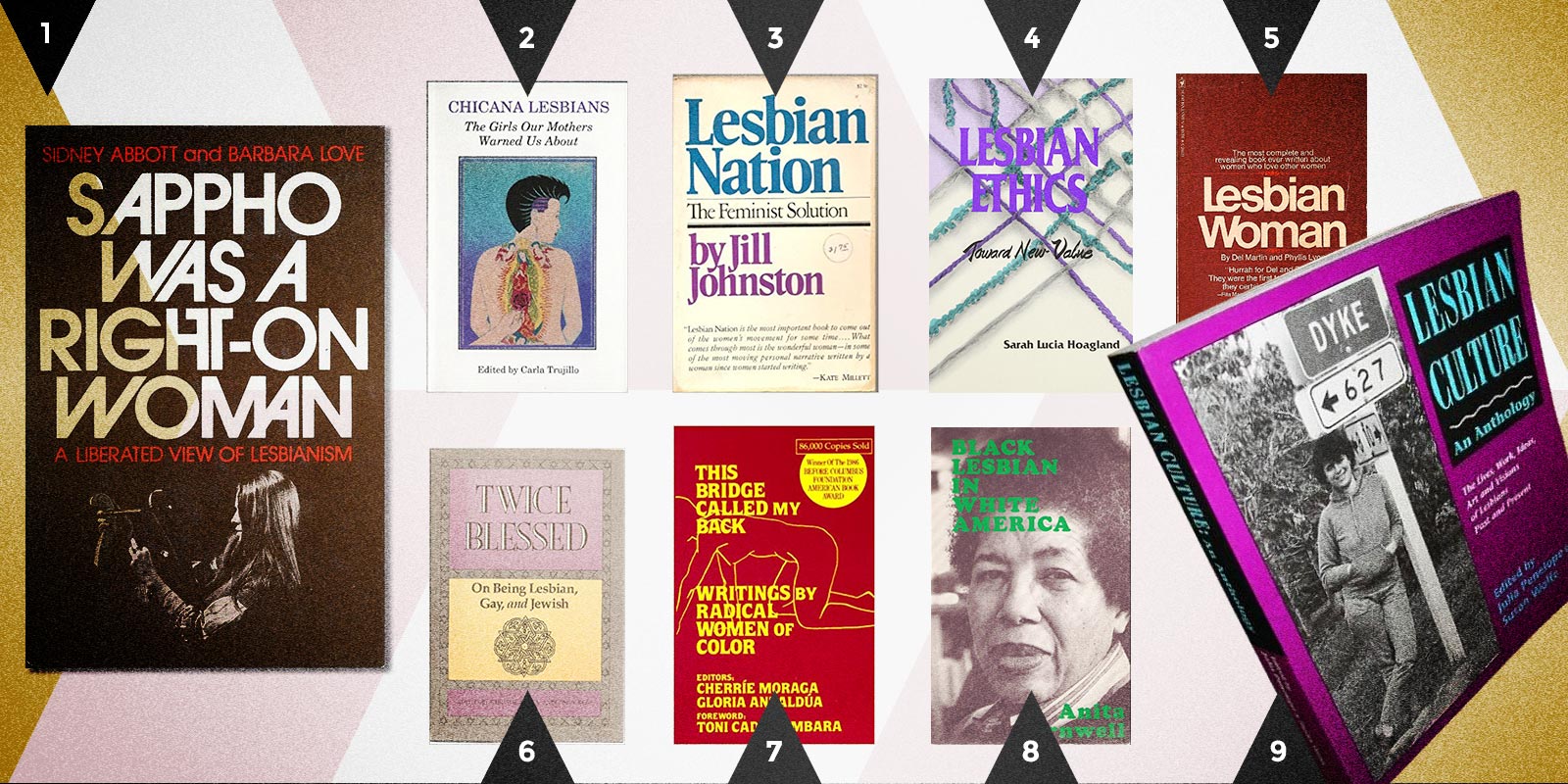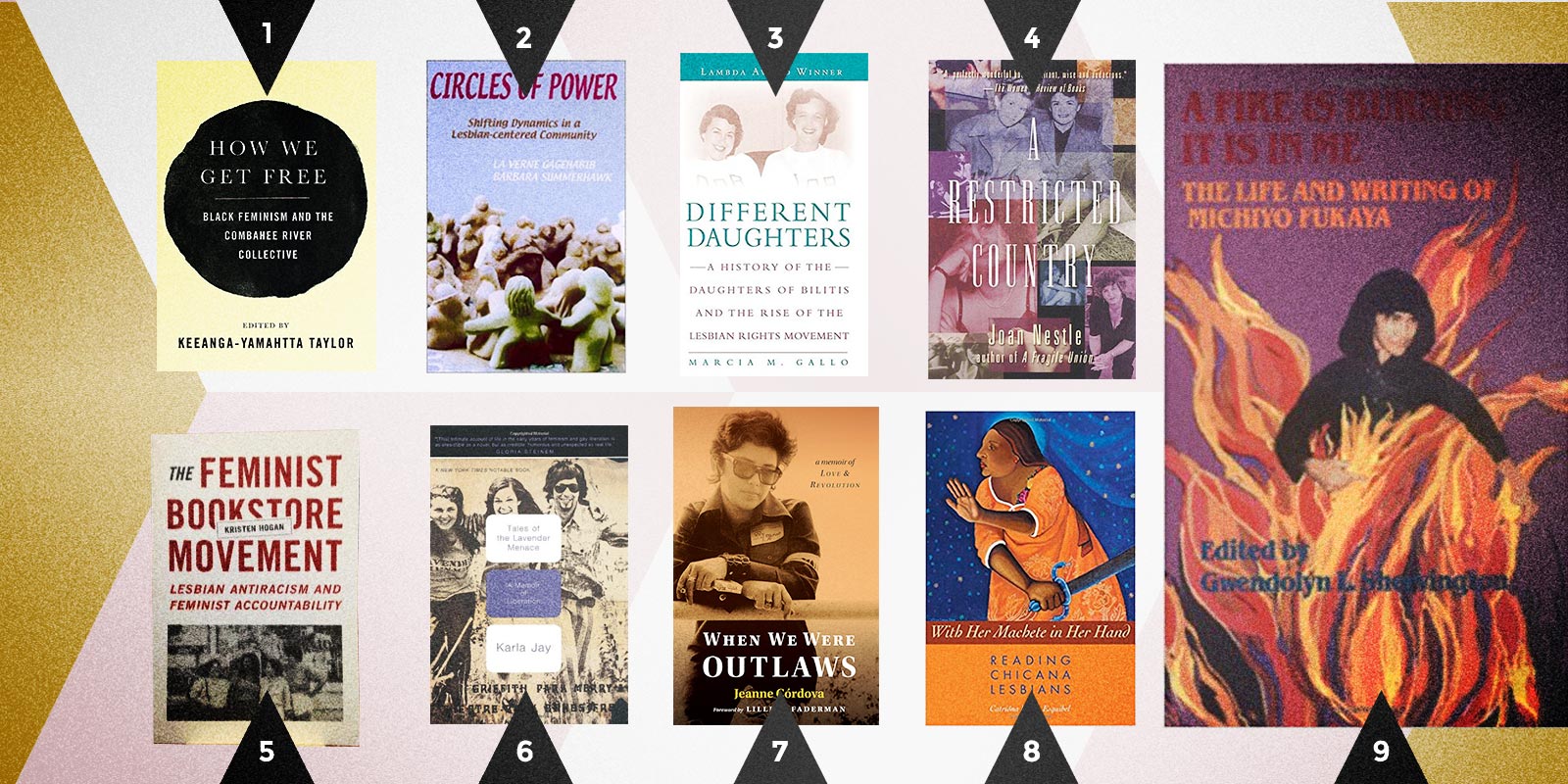
The term “Lavender Menace” was first summoned by Betty Friedan, storied author of “The Feminine Mystique” and a National Organization for Women spokesperson who feared the encroachment of lesbian feminists into what was then a very white, very heterosexual and very (upper-to-) middle-class second wave feminist movement. Lesbians would ruin everything, she feared, with their radical agenda and reputation for misandry!
Lesbian writer and activist Rita Mae Brown (author of Rubyfruit Jungle) promptly resigned from her post in NOW, and began planning a “Lavender Menace Zap” for the 1970 Second Congress to Unite Women in New York. Brown and her local lesbian radical feminist consciousness-raising group prepared a ten-paragraph “Women-Identified Women” manifesto and also hand-dyed and screenprinted “Lavender Menace” t-shirts for everybody, which they cleverly layered to obscure before filing into the 300-strong auditorium where the Congress was set to begin. But just as the first speaker came to the mic, a lesbian feminist switched off the lights, pulled the plug on the mike, and ignited a series of “rebel yells.” The lesbians tore off their coats and sweaters, revealing the shirts benath, and when the lights came back on, they were standing proud, yelling things like “I’m tired of being in the closet because of the women’s movement!” and ‘Who wants to join us?” The Menaces passed out copies of “The Women-Identified Women” and stole a few minutes of stage time to address the exclusion of lesbians from the conference and the women’s movement. By the second day of the congress, lesbians were running workshops on homophobia. It was a major turning point for lesbian inclusion in mainstream feminism.

That zap was re-located to a different event and a different time with different participants for the 2017 LGBT history miniseries “When We Rise,” which inspired us to make Lavender Menace t-shirts for y’all. They were a HIT and we’ve blown through five printings of each cut, all proudly donned by lesbians, queers, bisexuals, pansexuals and otherwise-identified women and non-binary people who look good in purple. (Which is truly everybody.)
The spirit of our Lavender Menace shirt is the spirit of all of us here, who flaunt the heteronormative patriarchy and dare to be ourselves, even when it pisses everybody else off and even when it’s not politically convenient.
Vintage Lesbian Feminist Classics

Things have changed a lot since lesbian feminism’s heyday and a lot of the ideas central to lesbian feminist thinking have been rejected by contemporary LGBT women’s communities — like its frequent exclusion of trans and bi women and its habitual opposition to BDSM, sex work, porn and butch/femme roles. Other principles remain for those who are still committed to many of its separatist ideologies, like creating self-sustaining societies entirely independent from men. Others have been built upon by queer theory and contemporary queer communities that include lesbian, bisexual, queer and trans women and often non-binary people, like questioning heteronormativity, valuing female solidarity, defying traditional gender roles and low-key separatism. A former member of the Lesbian Avengers told me once that radical political ideas serve an important function on many levels — through considering the radical, we’re able to more clearly identify the realistic.
Sappho Was a Right-On Woman is considered the first nonfiction book about lesbianism from a “positive perspective.” This Bridge Called My Back is a landmark anthology of Chicana lesbian feminism, which came out of the 70s/80s Chicana feminism movement and aimed to create what Chicana lesbians Cherie Moraga and Gloria Anzaldúa called “theory in the flesh,” “one where the typical realities of our lives —our skin color, the land or concrete we grew up on, our sexual belongings—all fuse to create a political born out of necessity.”
These books are great gifts for people who can understand them in context.
Books That Look Back On Lesbian Feminism

These books look back on the emerging lesbian rights movement, either through a historical/political lens or through memoir and personal experience.
Books That Look Ahead: Inclusive Lesbian and Queer Voices

Smart women and otherwise identified-queers and trans folks with big ideas for the issues facing us now and forevermore. I will not rest until everybody reads Conflict is Not Abuse, sorry.
Lesbian Clothing / Accessories

Just dyke out.
For Your Lesbian House








